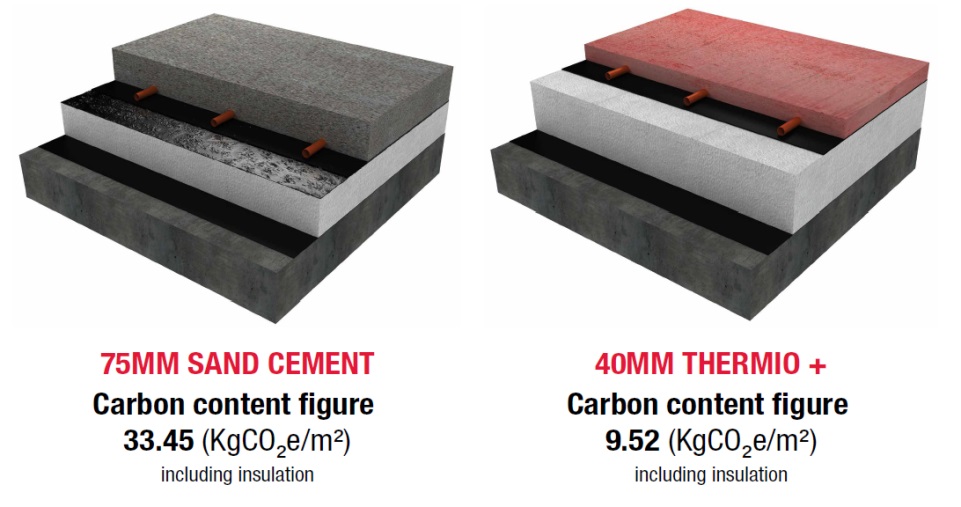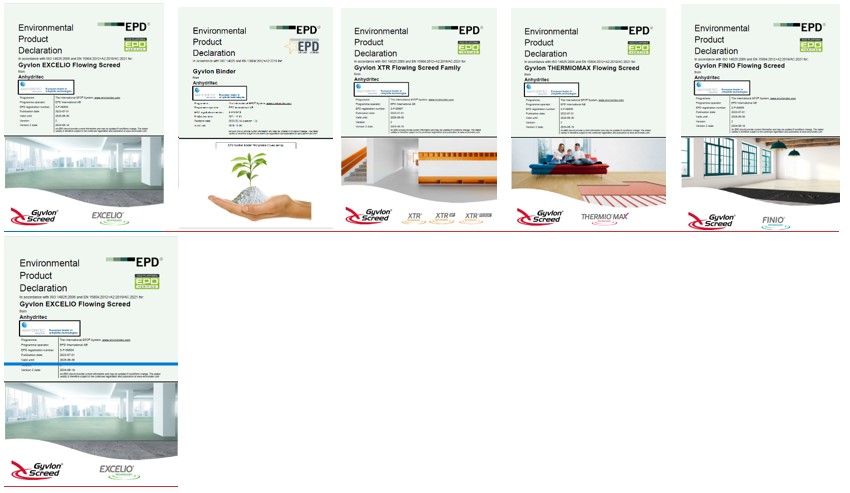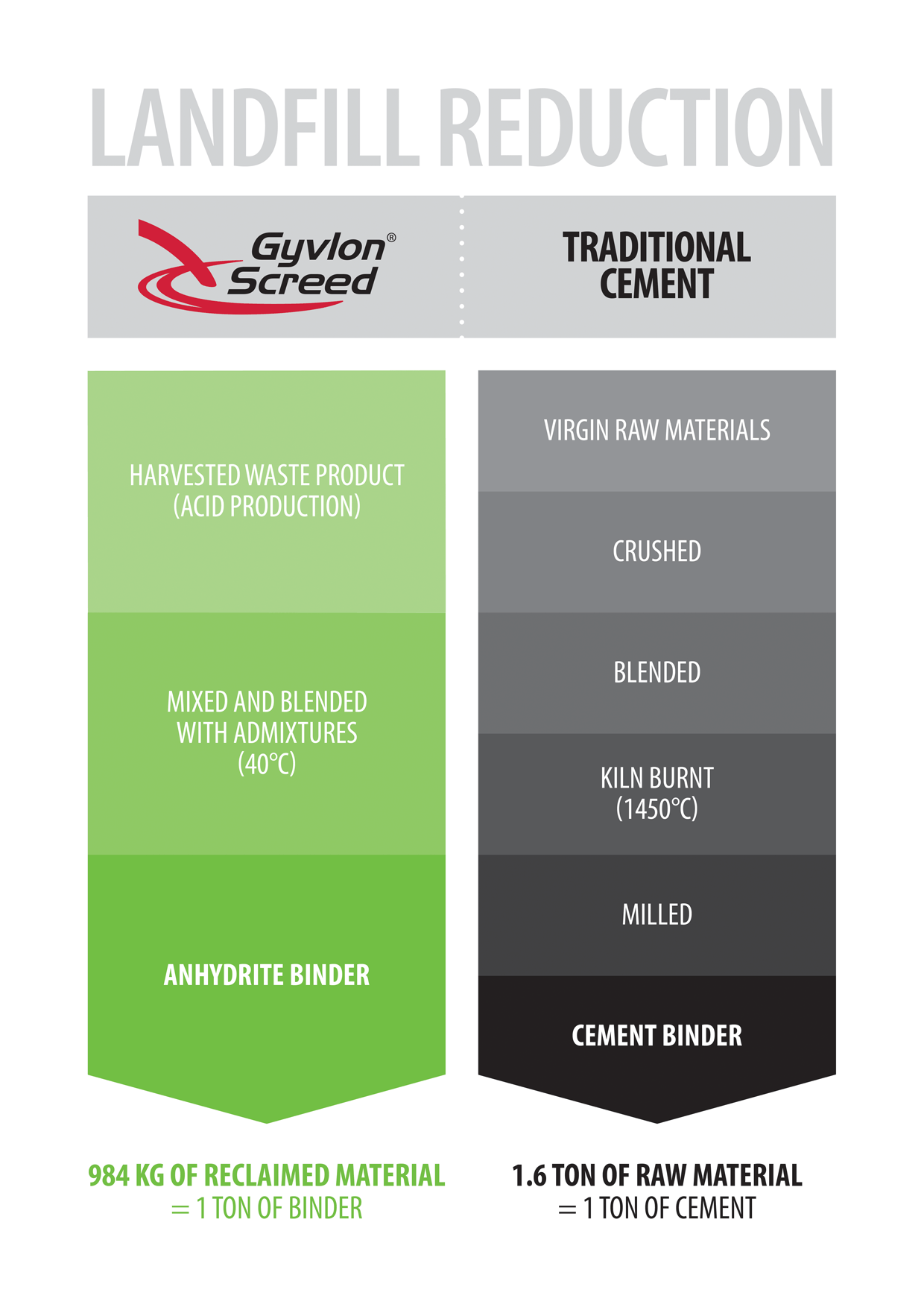Environmental Impacts
Gyvlon Flowing Screeds can greatly reduce carbon content by up to 90% and greatly increase the recycled content Vs cementitious screeds.

We at Anhydritec understand that the products we choose to use in the construction process can have a huge impact on the environment. Our Gyvlon Screed products:®
- are made from 98% recycled material and greatly contribute to sustainability in the supply chain. (ISO14021 certified)
- can greatly reduce your embedded carbon content vs cementitious screeds.
- made using Synthetic Anhydrite, a byproduct of industrial operations, its manufacturing does not require the significant levels of quarrying or energy usage associated with cement, the world's fourth largest CO2 emitter.
Its production does not require the high levels of quarrying or energy consumption associated with cement.
Gyvlon Screed and Carbon Reduction
Carbon footprinting has become a more considered part of building design within the built environment. It seems that everybody’s products are greener than they were and it is getting harder to compare / benchmark things to understanding what impact your choices are having on the build.
Therefore we have completed & logged certified environmental product declarations (EPD’s) with an independent third party, Envirodec for our screed making binder and also for our screeds. These are available on request or from their website
![]() SP04918, SP05469, SP09604, SP09605, SP09606, SP09607
SP04918, SP05469, SP09604, SP09605, SP09606, SP09607



